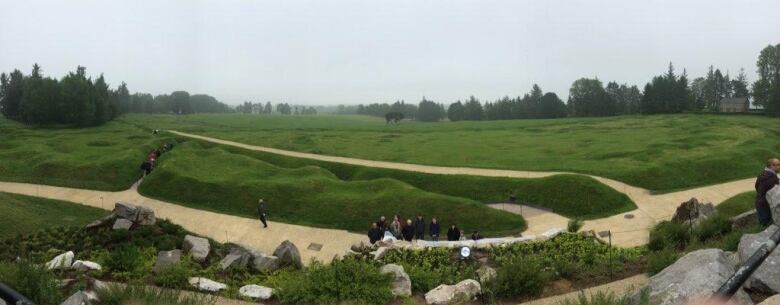Victims, not heroes: The unsettling truth behind Beaumont-Hamel's carnage
'Our greatest debt to the young men who were sent to their deaths is historical honesty'

One hundred years after Beaumont-Hamel, it's time to view the soldiers in theNewfoundland Regiment who were killed or injured on that day for what theyreally were: Victims.
-
Beaumont-Hamel anniversary marks sombre, bloody memory for Newfoundland and Labrador
- Beaumont-Hamel: What happened, and what went wrong
- WW I slaughter of Newfoundland Regiment a case of 'strategic stupidity': Rick Hillier
Historian/dramatist Kevin Major has described the battle as "the single greatesttragedy in the history of Newfoundland and Labrador." And, this place hasknown its share of tragedies: The eradication of the Beothuk, the Great Sealing Disaster, the sinking of the Caribou, the Ocean Ranger, to name just a few.
Beaumont-Hamel tops a long catalogue of sorrow.
For years the trench slaughter has been cloaked as valour and glory. Yet formany of the men who volunteered, a primary impulse was not patriotism, butrather a desire to escape one of the poorest places in North America and to seekadventure.
Suicidal mission
To question motivation and events is not to question individual bravery. Aterrified man who runs into storms of enemy machinegun fire believing he canchange the outcome of battle even if he dies is, by definition, brave. Butindividual acts of bravery do not justify the destruction of a generation of men ina pointless war that nobody understood.

At Vimy, frontline trencheswere so close together that the Canadians andGermans could lob grenades at each other. The point is that the Newfoundlanders never had a chance. There is no evidence that any soldier in the regiment got off a clear shot, let alone killed a single enemy.
After sending 324Newfoundlanders to die in futility and injuring another 386, theresponsibility for the devastation of human life doesn't lie with the regiment butwith the incompetent British generals who devised a catastrophic "Big Push"strategy that was doomed.
In a grim attempt to mollify the regiment'sobliteration, one British commander noted that the failure happened atBeaumont-Hamel because "dead men can advance no further."Sure, the b'ys inthe regiment gave it their all, but for what?
Newfoundlanders are fiercely proud of the fact this place was a separate colony,its own country. But unlike real sovereign countries at the time, another nationhad complete control over our international affairs. The assassination of a noblein the Balkans triggered a series of events in which London decided it musthonour a treaty signed with Belgium in 1839.
Soldiers from Newfoundland and Labrador got sucked into a bloody meatgrinder in France because of an obscure 19th century treaty over a country fewcould locate on a map.
Need for historical honesty
Of all the arguments used to rationalize the sacrifice at Beaumont-Hamel, theassertion that these men died "for our values" or "for our way of life" is theshakiest.
Recently, a former Canadian general told me that the men who died atBeaumont-Hamel "protected the freedoms we enjoy today."But what is trueabout the Second World War, is not true about the First. In 1914, Europeplunged into war because of an antiquated diplomatic system. Kaiser Wilhelm'snext stop was not St. John's.
For most of the last century we have needed to cling to the words such as thoseuttered in 1920 by the Reverend Canon Jeeves at the Anglican Cathedral in St.John's: "What you enjoy is only yours today because they laid down their liveson the National Altar".

The notion that the Regiment died for freedom and liberty carries additionalirony. In the 1920s and 1930s the island's ravaged economy, and the cost ofpaying off the Mother Country's war debt drove the colony bankrupt. Wesurrendered our sovereignty to the country that dragged us into the Great War.
Was this the liberty the men died for at Beaumont-Hamel?
We have needed to believe in bravery and heroism because to think otherwisewas unthinkable. One hundred years after their sacrifice, our greatest debt to theyoung men who were sent to their deaths is historical honesty.
What did the menin the Regiment really die for? Nothing.













_(720p).jpg)


 OFFICIAL HD MUSIC VIDEO.jpg)
.jpg)



























































































